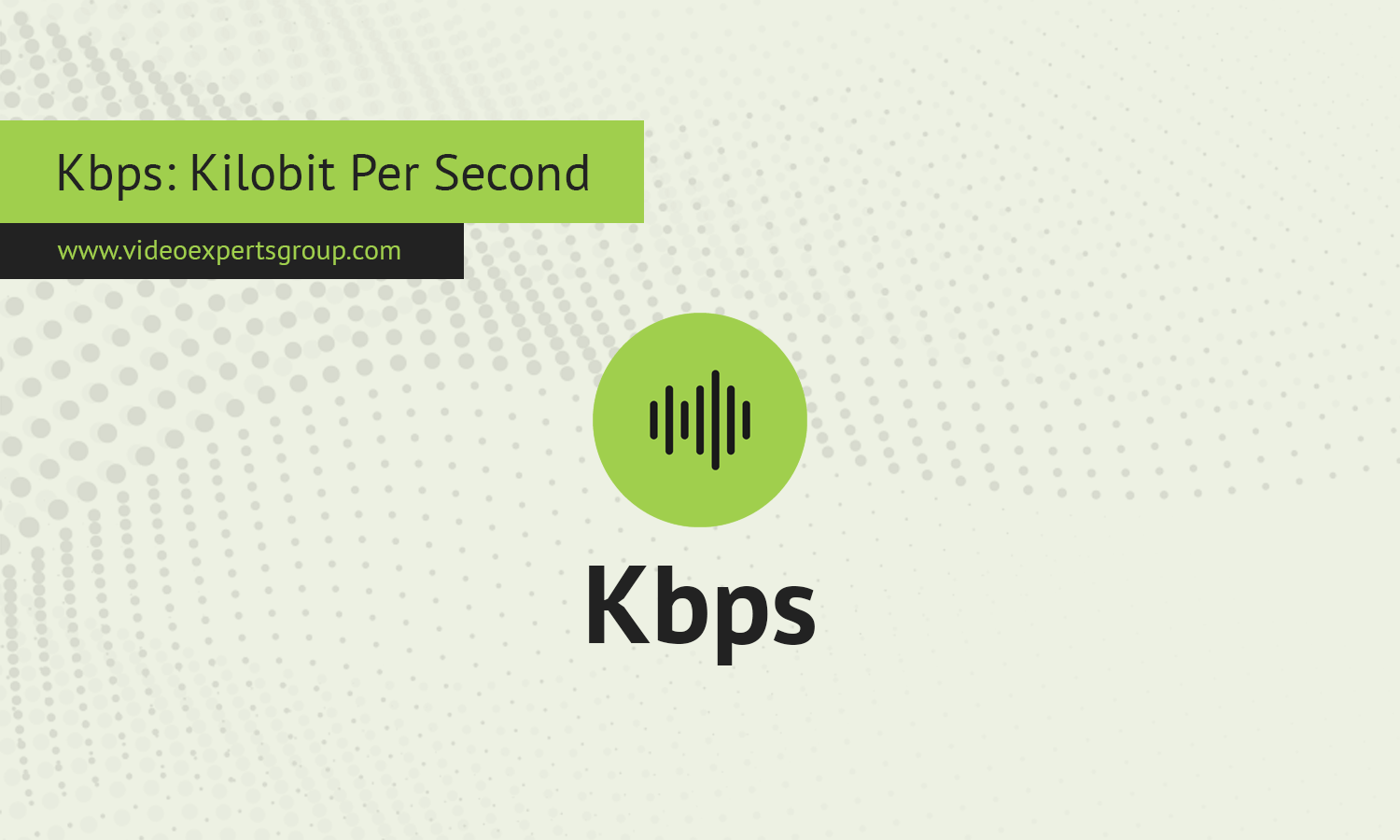When we stream videos, send files, or browse the web, the speed at which data moves between devices or across networks directly impacts the user experience. Kbps is one of the most commonly referenced units for lower-speed data transfers, and it plays a significant role in older internet connections like dial-up, as well as in mobile networks, audio streaming, and certain IoT (Internet of Things) devices.
In this article, we’ll explore the meaning of Kbps, as well as its advantages and disadvantages in practical scenarios.
Meaning
Kbps (Kilobit Per Second) is a unit that measures how many kilobits (1,000 bits) of data are transmitted every second. A bit is the smallest unit of data in computing, and a kilobit is equal to 1,000 bits. Therefore, when you see a speed listed in Kbps, it tells you how many thousand bits of data are moving from one point to another each second.
For example:
- 256 Kbps means that 256,000 bits of data are being transferred every second.
- 64 Kbps would be a much slower speed, transferring only 64,000 bits per second.
It’s important to distinguish Kbps (kilobits per second) from KBps (kilobytes per second), where 1 kilobyte equals 8 kilobits. While Kbps is commonly used to describe internet or network speeds, KBps is often used to measure file sizes or download speeds.
Conversion Table
This table includes conversions from bits per second (bps) to tebibytes per second (TiBps), along with an additional column for bytes per second (Bps), making it easier to understand how these units relate to each other.
| Unit | Bit per second | Byte per second |
|---|---|---|
| 1 bit per second (bps) | 1 bps | 0.125 Bps |
| 1 kilobit per second (Kbps) | 1,000 bps | 125 Bps |
| 1 megabit per second (Mbps) | 1,000,000 bps | 125,000 Bps |
| 1 gigabit per second (Gbps) | 1,000,000,000 bps | 125,000,000 Bps |
| 1 terabit per second (Tbps) | 1,000,000,000,000 bps | 125,000,000,000 Bps |
| 1 petabit per second (Pbps) | 1,000,000,000,000,000 bps | 125,000,000,000,000 Bps |
| 1 exabit per second (Ebps) | 1,000,000,000,000,000,000 bps | 125,000,000,000,000,000 Bps |
| 1 byte per second (Bps) | 8 bps | 1 Bps |
| 1 kilobyte per second (KBps) | 8,000 bps | 1,000 Bps |
| 1 megabyte per second (MBps) | 8,000,000 bps | 1,000,000 Bps |
| 1 gigabyte per second (GBps) | 8,000,000,000 bps | 1,000,000,000 Bps |
| 1 terabyte per second (TBps) | 8,000,000,000,000 bps | 1,000,000,000,000 Bps |
| 1 kibibyte per second (KiBps) | 8,192 bps | 1,024 Bps |
| 1 mebibyte per second (MiBps) | 8,388,608 bps | 1,048,576 Bps |
| 1 gibibyte per second (GiBps) | 8,589,934,592 bps | 1,073,741,824 Bps |
| 1 tebibyte per second (TiBps) | 8,796,093,022,208 bps | 1,099,511,627,776 Bps |
Pros and Cons
Pros:
-
Useful for Measuring Lower-Speed Connections: Kbps is highly relevant when describing lower-bandwidth services, such as dial-up internet, 2G mobile networks, or audio streaming with compressed files. It provides a detailed and accurate understanding of speed at these levels.
-
Suitable for IoT Devices: Many Internet of Things (IoT) devices, such as sensors and smart appliances, don’t require high data transfer speeds. In such cases, Kbps is a suitable measurement for the data rates required by these low-power, low-bandwidth devices.
-
Simplicity: Kbps is easy to calculate and understand when dealing with smaller data transfers. For applications where only minimal data is exchanged—such as sending small messages or emails—Kbps provides a clear measure of the required bandwidth.
-
Bandwidth Optimization: In areas where high-speed internet is unavailable, such as rural regions, or in the case of network congestion, Kbps-based services can help users optimize their limited bandwidth for tasks like text-based browsing, basic web applications, or low-quality audio streaming.
Cons:
-
Slow Speeds: A speed measured in Kbps is typically considered slow by modern standards. For example, 256 Kbps might be sufficient for low-quality audio streaming, but it is too slow for high-definition video, gaming, or large file downloads. Most users today require Mbps or Gbps speeds for more intensive online activities.
-
Outdated for Modern Applications: While Kbps was once standard for older technologies like dial-up internet and 2G mobile networks, it is no longer sufficient for most modern applications. High-definition streaming, cloud computing, video conferencing, and online gaming require much faster data transfer rates.
-
Confusion Between Bits and Bytes: A common issue is the confusion between bits and bytes. Many users mistake Kbps (kilobits) for KBps (kilobytes), which can lead to misunderstandings about the actual speed of their connection or how quickly data can be downloaded or uploaded. Since there are 8 bits in 1 byte, a connection speed of 256 Kbps is roughly equal to 32 KBps, which is relatively slow.
-
Limited for Large Data Transfers: At speeds measured in Kbps, transferring large amounts of data (such as high-resolution images, videos, or software) can be time-consuming. Users may find themselves frustrated with slow download or upload speeds, especially when dealing with large files.
Kbps is an essential unit for measuring lower-speed data transfers, particularly in contexts where only minimal data is required, such as IoT devices or basic internet browsing. However, as internet technology has evolved, Kbps has become less relevant for high-speed applications. While it offers clarity and accuracy for small-scale data transfers, users aiming for modern multimedia experiences or fast file downloads need to rely on higher speeds measured in Mbps or Gbps. Understanding the advantages and limitations of Kbps helps users make informed decisions about their network needs, especially in regions with limited bandwidth.
















